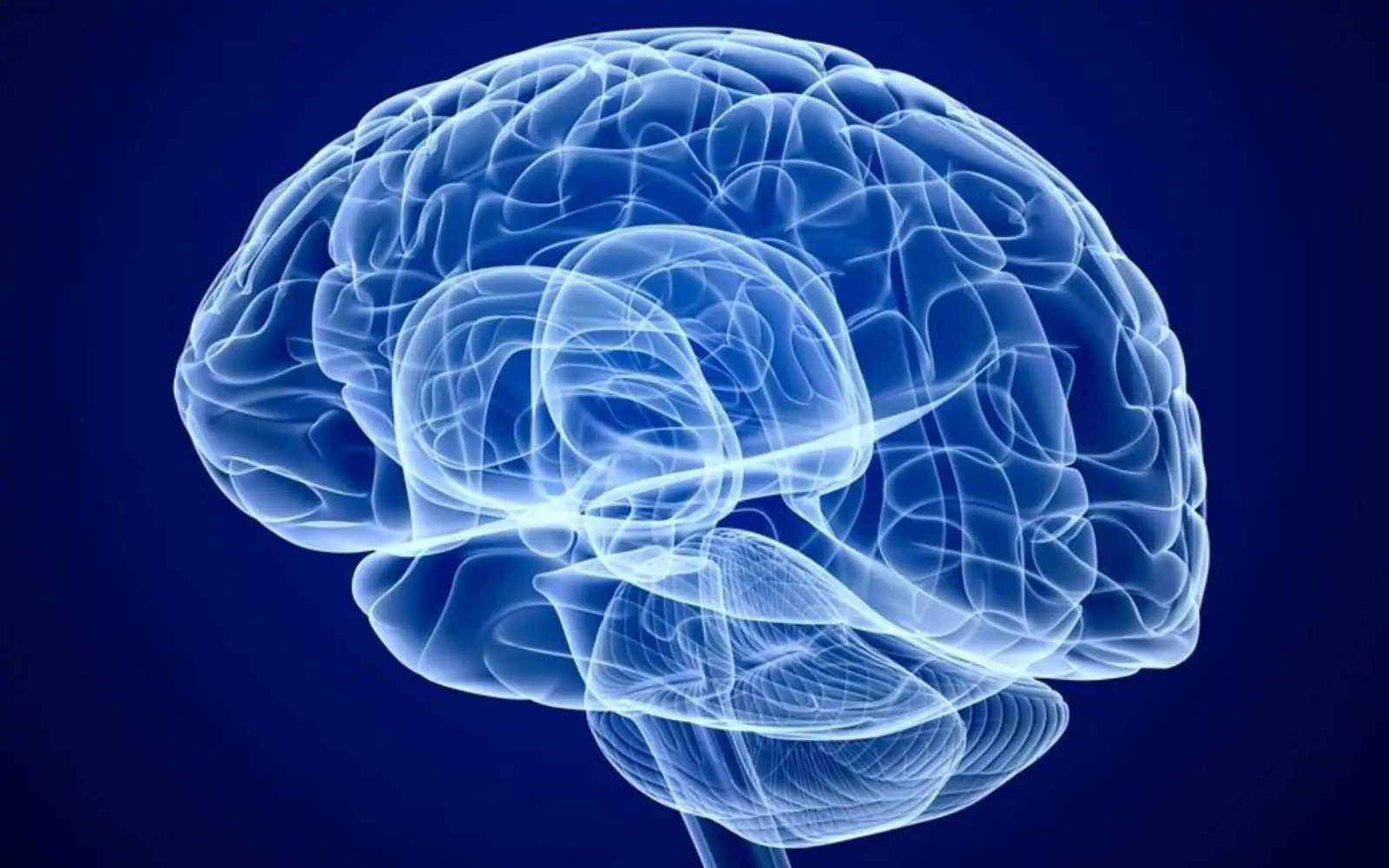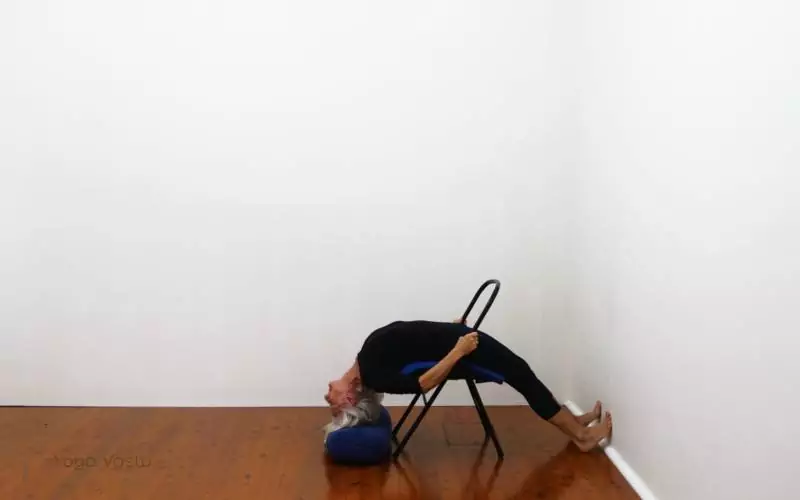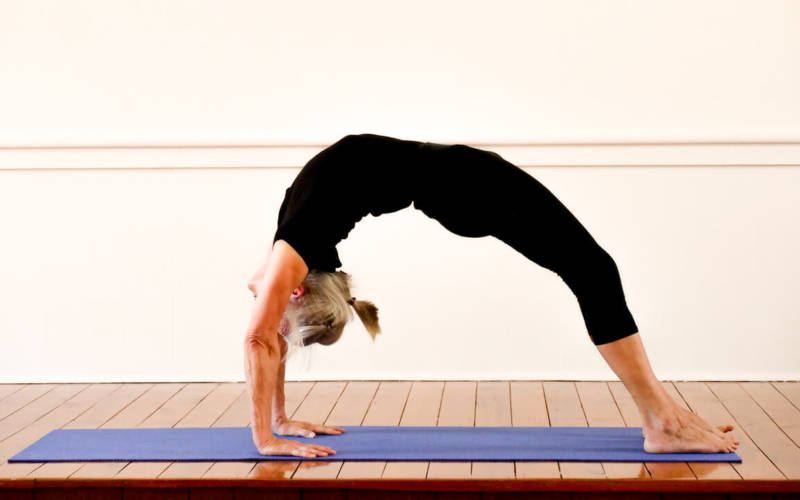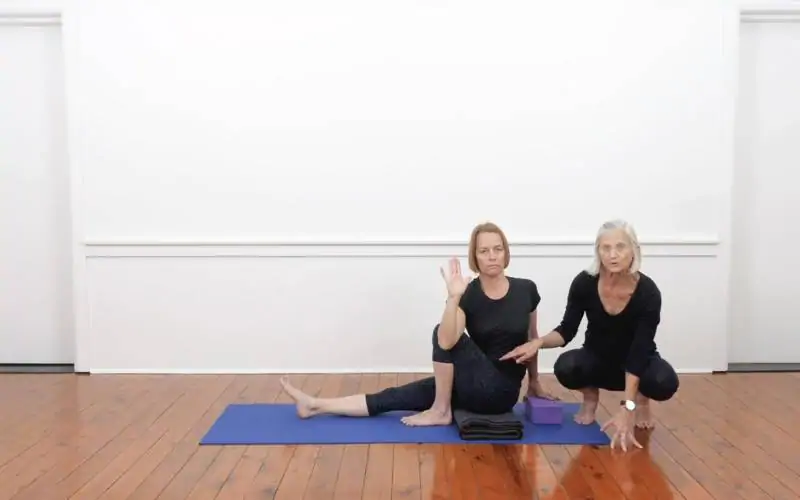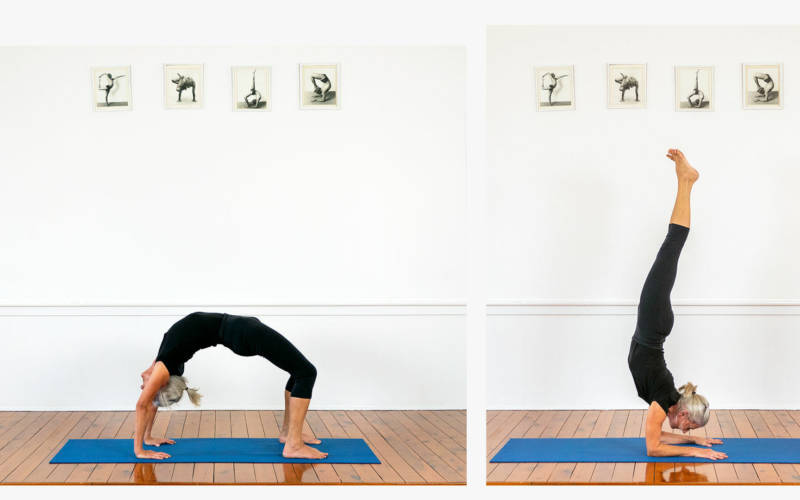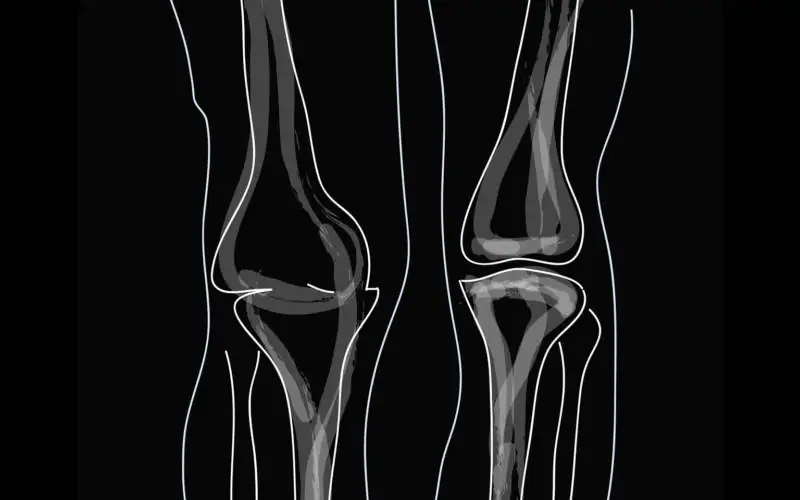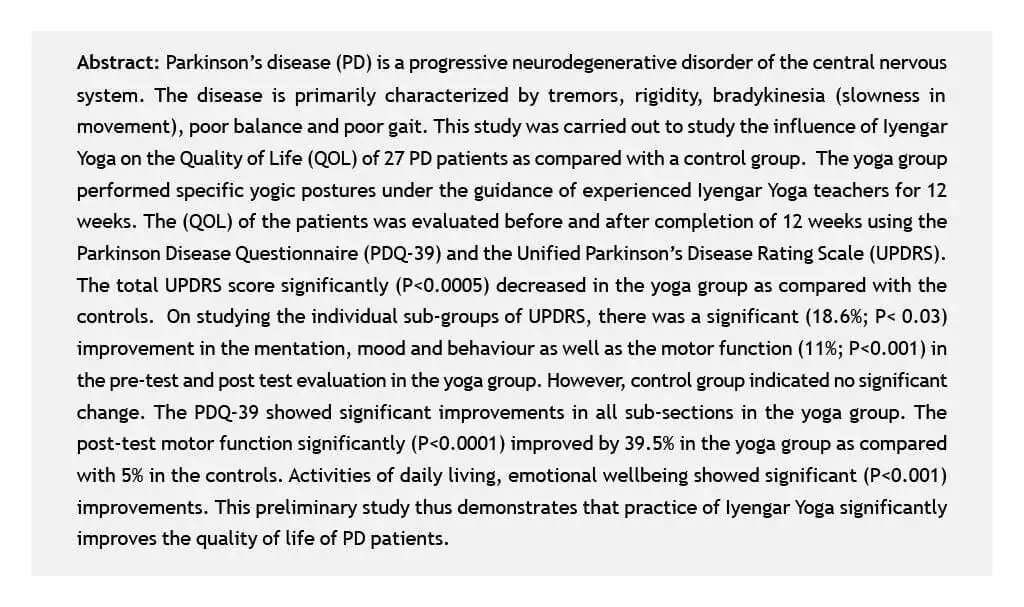
Parkinson’s disease (PD) is a progressive neurodegenerative disorder of the central nervous system. The disease is primarily characterized by tremors, rigidity, bradykinesia (slowness in movement), poor balance and parkinsonian gait. The secondary symptoms of Parkinson’s disease include pain, dystonia, sleep disturbances, depression, micrographia (handwriting becomes smaller), dysarthria, difficulty in swallowing and lack of facial expressions. Bradykinesia (slowness in movement) is a significant and the most disabling symptom as it interferes with routine daily activities like walking and sitting. Rest tremor is the most common presenting symptom of PD. It is least disabling but most embarrassing and therefore psychologically distressing. Even a mild tremor can become disturbing as it creates difficulty in performing simple tasks like cutting food, buttoning garments and handling utensils.
Initially the symptoms are mild but as the disease progresses, it needs medical intervention. The goal of medical treatment is not to treat the disease but treat the symptoms of the disease and help the patient manage functioning independently.
One of the limitations of medical therapies are the side effects of the drugs used. Secondly, the benefits of medical therapy are not everlasting, as the medications lose their efficacy with time.
Therefore attempts have been made to use alternative or complementary forms of therapy to alleviate the symptoms of the disease. Many of these therapies have their origins in ancient traditional practices of different cultures. Such therapies include Ayurveda, Herbal and Traditional Chinese Medication, Acupuncture, Tai Chi and Yoga.
Yoga is an ancient Indian science and philosophy which dates back to 5000 years having been first been codified in the treatise Yoga darshana by Patanjali. The objective of yoga is to attain control and balance in the mind and body. The control in body and mind, in turn, can be acquired by performing different asanas (postures) and pranayama (modulation of the breath).
In the last century Yogacharya BKS Iyengar, through his teachings and books has brought about a resurgence of interest in this subject all over the world. His method of teaching emphasizes on precisely bringing alignment to the body in different asanas. To achieve this goal, various props such as belts, chairs, ropes, blankets, bolsters and other wooden supports are used. His style of teaching yoga is now commonly referred to as Iyengar Yoga. The use of these props also makes it possible for people with physical ailments to perform the classical asanas, which otherwise would not have been possible. The therapeutic effects of Iyengar yoga to treat various medical conditions have been reported.
There have been reports on the benefits of Iyengar Yoga in patients with PD in the mass media but there have been no controlled trials to substantiate these claims. The objective of this study was to determine the efficacy of Iyengar Yoga in alleviating the most common symptoms of patients suffering from PD.
Patients and Methods
Patients
PD patients attending outpatient clinics attached to different hospitals in Mumbai were given an orientation to the proposed study. Patients who volunteered to participate in this study were given a detailed patient information sheet. Written informed consent was obtained from those patients who met with the inclusion exclusion criteria of the study. Information on the personal details of the patient including age, gender, duration of disease and the medication being used was recorded.

Evaluation of the patients
The intensity of the PD was evaluated using the Unified Parkinson’s Disease Rating scale (UPDRS) and the Parkinson’s disease Quality of life (PDQ – 39). All the four scales of UPDRS were evaluated. Strengths of the UPDRS include its wide utilisation, its application across the clinical spectrum of PD, its nearly comprehensive coverage of motor symptoms, and its clinimetric properties, including reliability and validity Of the range of disease specific instruments that have been developed to assess these dimensions of outcome, the Parkinson’s Disease Quality of life (PDQ – 39) is the most widely used instrument with the most extensive supportive evidence of measurement properties such as reliability, validity and responsiveness. Therefore, these two instruments were used to evaluate the patients. Each patient was evaluated at the time of enrolment of the program (baseline) and after the completion of three months after ‘yoga’ intervention.
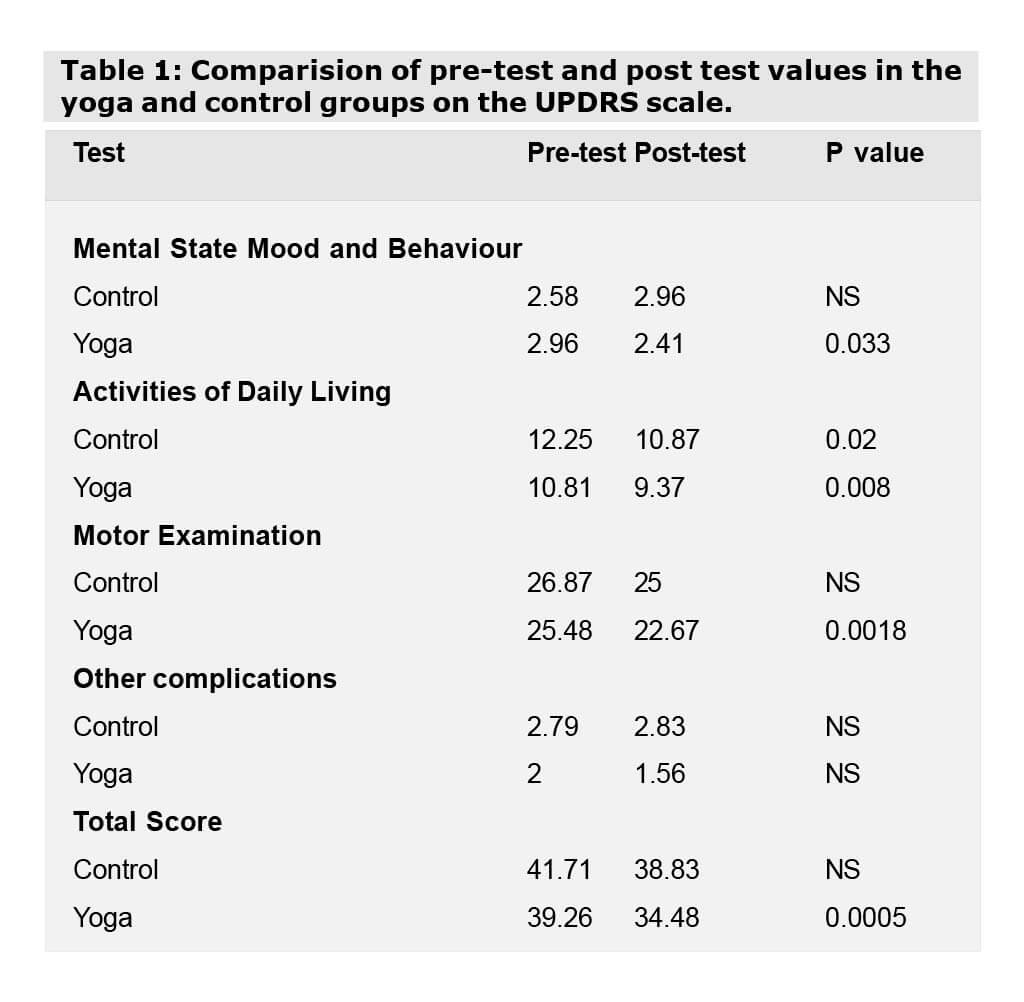
Selection of patients: A total of 60 patients enrolled for this program. Of these, 30 were ‘randomly’ assigned to the ‘yoga’ group and the remaining 30 served as controls.
Yoga therapy: Patients in the yoga therapy group were initially instructed daily for 5 days a week, consecutively for 2 weeks. Each yoga session lasted 1 ¼ hour each. On completion of the 10 day period, the yoga classes were held once a week over a period of two and a half months. During this period patients were provided with an instruction sheet to help them practice yoga. Each patient maintained a weekly record sheet of yoga practice.
The yogic asanas that were taught during this period were Tadasana, Urdhva Hastasana, Urdhva Baddhanguliyasana, shoulder and neck traction, Adho Mukha Svanasana, Supta Padangusthasana I and II, Bharadvajasana, Supta Baddha Konasana, Sarvangasana, Setu bandha Sarvangasana and Savasana.
Results
Of the 51 patients enrolled for the study, 27 patients were in the ‘yoga therapy’ group and 24 served as controls. The mean age of the patients in the yoga group was 64.1 years and those in the control group was 63.7 years. There were 5 women (19.2%) and 22 men (84.6%) in the yoga group while there 4 women (18.2%) and 19 men (86.4%) in the control group. The patients were suffering from PD for a mean duration of 6.2 years while that for the control group was 5.9 years.
UPDRS evaluation
The comparison of the baseline measures of the UPDRS and the PDQ-39 scales were not statistically different between the groups. The mental state, mood and behavior reflective of the emotional state of the patients significantly (P < 0.033) improved in the yoga group. The activities of daily living should a significant improvement in both the control as well as the yoga group. However, the extent of improvement in the yoga group was more significant than the control group. There was no change in the motor examination of the control group but showed a significant (P< 0.0018) change in the yoga group. There was no change in the incidence of complications in both the groups.
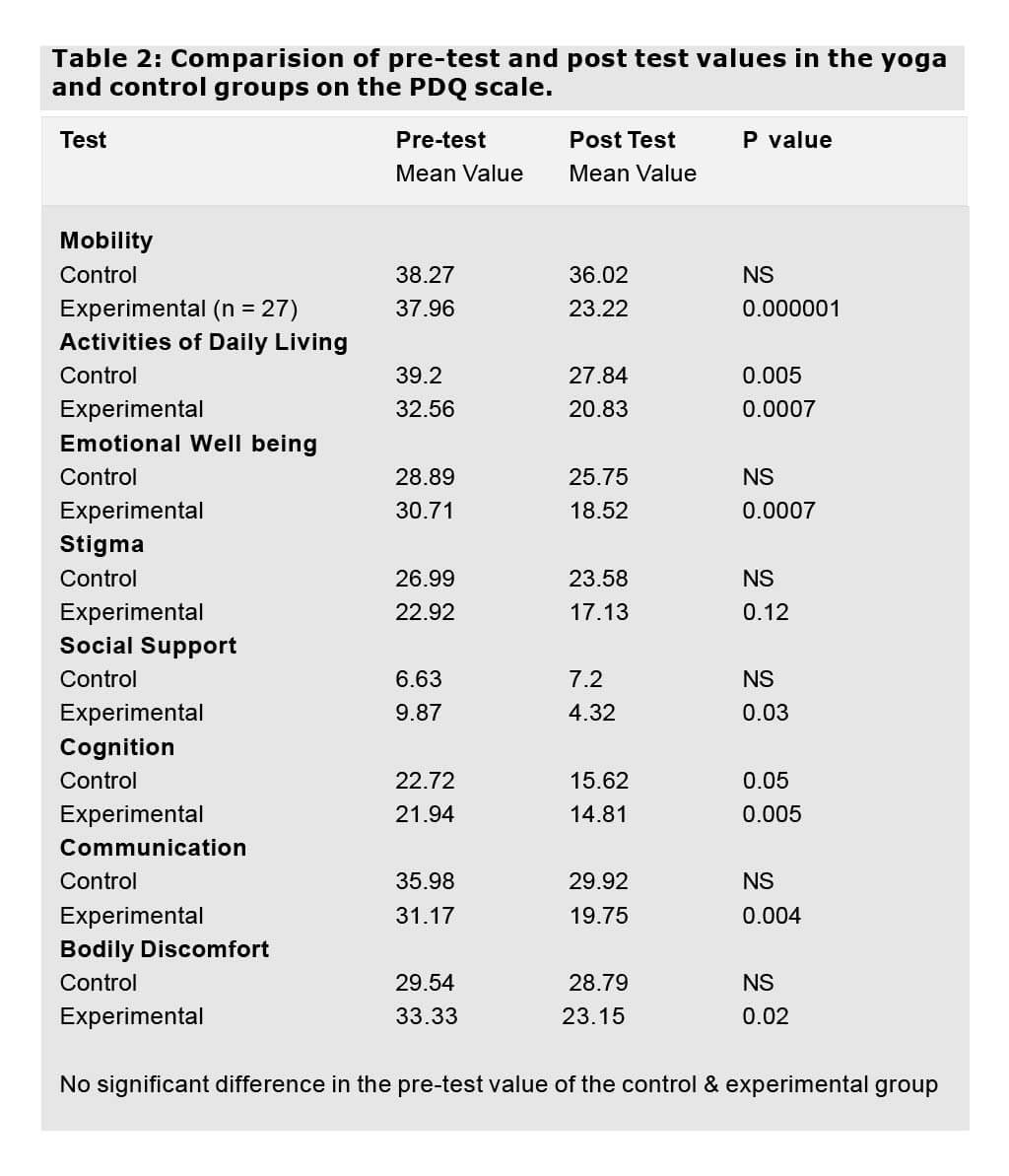
PDQ Evaluation
The pre and post test values in the control and yoga group are listed in table 2.
Discussion
Attempts have been made in the last few years to improve the quality of life of patients suffering from PD as cure is as yet available for the same. Various forms of complimentary therapies have been evaluated such as acupuncture, tai chi, Ayurveda.
We have attempted to study the efficacy of Iyengar Yoga in treating patients with PD. It was observed that in a span of three months, Iyengar Yoga was found to significantly improve the quality of life as judged by both the PDQ and UPDRS scales.
The unique advantages of Iyengar Yoga have been the precise set of instructions on how the patient can perform the asanas (yogic postures) as well as the use of props like chairs, bolsters, blankets. The props gave confidence to the patients to perform the yogic asanas which would have been beneficial to them as well as gave support so that they could stay in the asana for prolonged duration of time to attain its benefits.
The high level of statistical significance on both the UPDRS as well as the PDQ scales suggest that the beneficial effect is not merely a feeling of well-being but could likely be some physiological effects. Further studies need to be carried out to determine whether any physiological changes are occurring by the practice of yogasanas.
Acknowledgements
The authors express their gratitude to Yogacharya BKS Iyengar for personal guidance in this study; to Dr BS Singhal for his constant support and encouragement and all the patients who willing cooperated with the researchers during the study.
This article is part of the collection of studies published as the Mumbai Research Compilation. A collection of presentations made at the Light on Yoga Research Trust in collaboration with the Bombay Hospital Trust, Indian Medical Association, General Practitioners Association and the Parkinson’s Disease and Movement Disorder Society. They organized the conference on the ‘Scientific evidence on the Therapeutic Efficacy of Iyengar Yoga’. It highlights research papers on Iyengar Yoga and its medical benefits. The objective of which being the dissemination of knowledge about the science of yoga in the medical setting. The conference was held on October 12, 2008.
